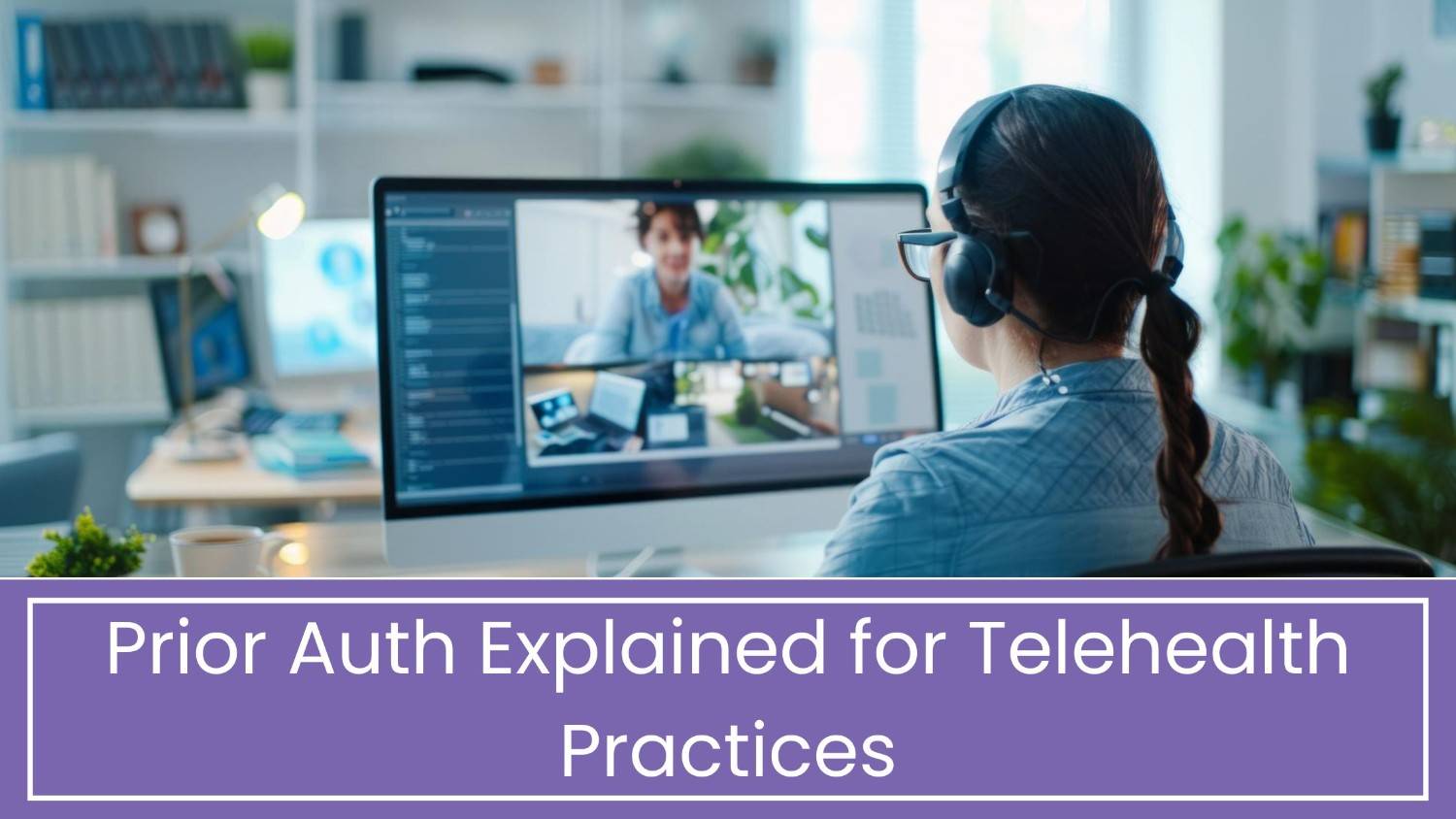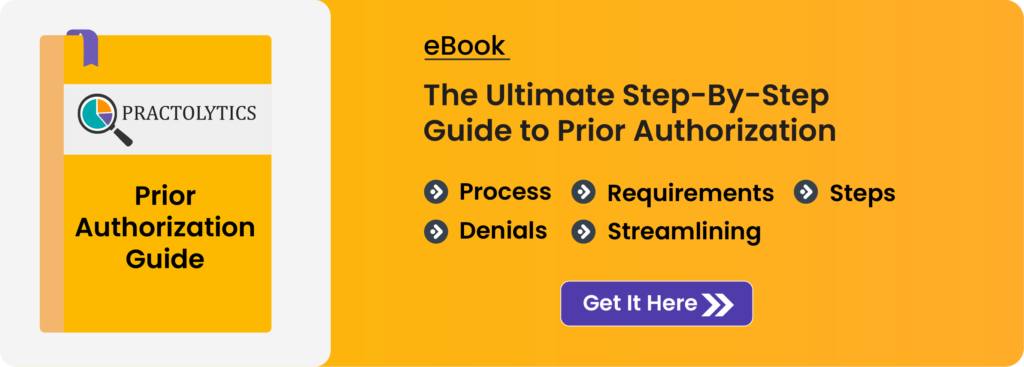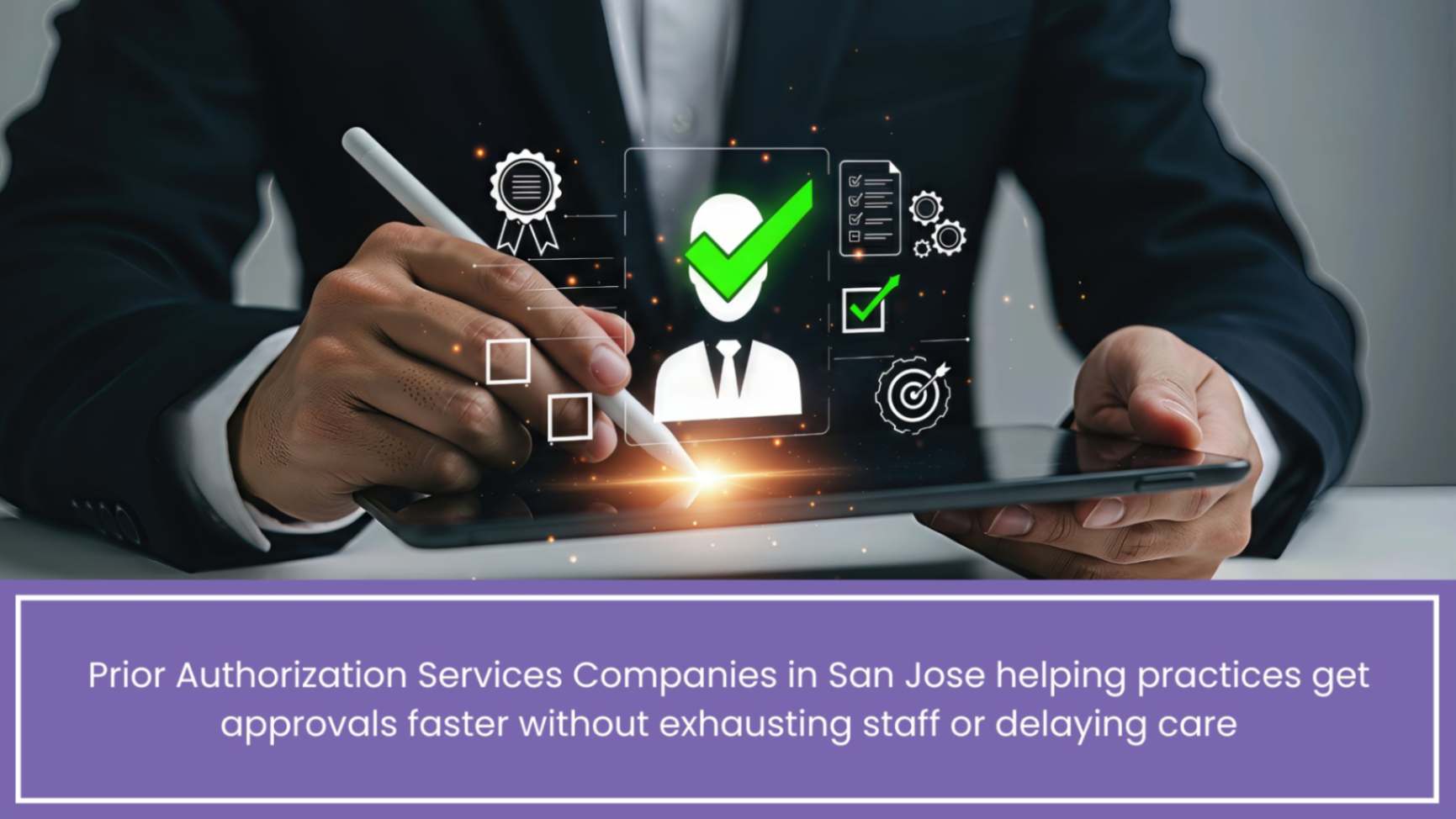Prior Auth Explained for Telehealth Practices
Prior Auth Explained for Telehealth Practices: Prior authorization in telehealth isn’t just about checking boxes—it’s about safeguarding your time, revenue, and patient experience. With varying payers, changing policies, and no physical exams to support claims, it’s easy to feel overwhelmed. This blog breaks down the unique challenges of virtual care and offers practical strategies to streamline the process. Whether you’re dealing with slow approvals or managing multiple state regulations, we’ll guide you to a more efficient system. With Practolytics, prior auth doesn’t have to be a hurdle—it can be hassle-free.
Table of Contents
What Telehealth Providers Need to Know About Prior Authorization in a Digital-First World?
Telehealth practices have redefined patient care. What was once limited to clinic rooms is now accessible at the click of a button. But with this advancement comes a different kind of complexity, especially in handling revenue cycle components like prior authorization.
Prior authorization, or PA, is not a new concept. Yet in the telehealth world, it functions with a set of unique challenges and expectations. This blog will take a close look at how prior authorization specifically affects telehealth practices, what complexities are involved, and how the right systems—including outsourcing—can significantly improve efficiency.
At Practolytics, we specialize in handling these intricacies. With more than 20 years of experience serving over 1400 providers across 31 states and managing more than 5 million claims annually, we know what it takes to make prior authorization work for telehealth.
Understanding the Role of Prior Authorization in Telehealth
Prior authorization (PA) is a crucial checkpoint in the healthcare medical billing process. It’s the payer’s way of confirming that a recommended service or procedure is medically necessary before approving reimbursement. For in-person practices, this process is already known to slow down care delivery and strain administrative resources. But for telehealth practices, the challenges run deeper and wider.
In a virtual setting, providers often don’t have access to traditional physical exam data, which can make it harder to justify certain services. Instead, the burden falls on clear, precise documentation—something that must be completed swiftly during fast-moving virtual visits. This leaves telehealth providers with very little margin for error or delay.
Complicating things further, payer policies for telehealth prior authorizations remain inconsistent. Some insurers have been slow to adapt their protocols to support virtual care, leaving providers to work through outdated or unclear requirements. At Practolytics, we help eliminate that guesswork. Our team maintains dynamic, payer-specific PA matrices so your staff always knows exactly what’s needed, when it’s needed. This means fewer delays, fewer denials, and more time focused on patient care—not paperwork.
Telehealth moves fast. We make sure your prior authorization process keeps up.
Common Telehealth Services That Often Need Prior Authorization
In telehealth, some services tend to get flagged more often for prior authorization. It usually comes down to how complex they are, how much they cost, or how frequently they’re billed. Payers want to double-check that these services are necessary before giving the green light. Below, we’ve put together a table that lists some of the most commonly watched services, their usual CPT codes, and why they often need prior approval:
|
Service Category |
Common Services (CPT Codes) |
Reason for Prior Authorization Requirement |
|
Behavioral Health |
90791, 90837, H0031 |
High frequency, long-term care, medication management |
|
Chronic Disease Management |
99490, 99457 |
Ongoing monitoring, cost-control by payers |
|
Remote Diagnostic Services |
99453, 99454 |
Device costs, concern over over-utilization |
|
Specialist Teleconsultation |
99242, 99243, 99244 |
Tertiary care needs, documentation-intensive |
|
High-Cost Medications |
J3490, J2505, Q9967 |
Expensive injectables or specialty drugs prescribed remotely |
At Practolytics, we help ensure all the correct documentation is collected and coded accurately for these high-risk services. Our team is trained to identify and mitigate potential red flags that could delay care.
Telehealth-Specific Challenges in the Prior Authorization Process!
Telehealth changes the landscape for how services are delivered and documented. These changes directly affect how payers evaluate and process prior authorization requests.
|
Challenge |
Impact on Telehealth Practices |
Workaround or Strategy |
|
Cross-State Licensing & Regulations |
Different rules for each payer depending on the service location and provider credentials |
Centralize licensure management; use clearinghouses with multi-state capability |
|
Documentation Standards |
Lack of physical examination can lead to insufficient proof of necessity |
Implement templates that guide virtual visit documentation |
|
Turnaround Time Expectations |
Patients expect faster care due to telehealth speed |
Use real-time tracking dashboards; automate status updates |
|
Lack of Uniformity Among Payers |
Every insurance company may have a different form or requirement |
Build a payer-specific checklist system within your EHR |
Practolytics works directly with your AdvancedMD EHR software and practice management tools to close documentation gaps, provide payer-specific alerts, and reduce submission errors.
Workflow of Prior Authorization in a Telehealth Setting
The prior authorization process can vary, but there is a general workflow that most practices follow. In telehealth, integrating this process into the virtual care delivery system ensures that it doesn’t interfere with scheduling or patient satisfaction.
|
Step |
Action Required |
Telehealth Consideration |
|
Identify Need for PA |
Check if the service or medication requires PA based on payer guidelines |
Automate checks via EHR or RCM systems |
|
Gather Documentation |
Collect notes, lab results, history, and teleconsultation details |
Use telehealth visit templates to prompt necessary inputs |
|
Submit Request |
Submit through payer portal, fax, or clearinghouse |
Batch submission using automation tools |
|
Follow Up |
Check for response, provide additional info if requested |
Assign dedicated staff or service to monitor status |
|
Communicate Decision |
Notify provider and patient of approval, denial, or appeal options |
Integrate notification within telehealth portal or patient app |
Practolytics manages this entire cycle on your behalf, providing your staff with real-time visibility and reducing their administrative burden.
Consequences of Poorly Managed Prior Authorization in Telehealth
When prior authorization is not managed effectively, telehealth practices face several risks:
- Revenue Leakage: Services may be rendered without approval, leading to denied claims.
- Patient Dissatisfaction: Delayed care due to pending authorization can result in cancelled appointments or worse, patients seeking care elsewhere.
- Provider Burnout: Clinical teams spending time on administrative work leads to dissatisfaction and inefficiency.
According to the American Medical Association (AMA), over 30% of providers report that prior authorization often leads to abandonment of care. In a telehealth context, this is even more critical, as patients expect speed and convenience.
Key Statistics on Prior Authorization in Virtual Care
Several industry surveys and payer data provide valuable insight into how prior authorization intersects with virtual care.
- 86% of physicians reported increased PA requirements over the past five years (AMA, 2023)
- 1 in 4 patients experience care delays due to PA (MGMA, 2023)
- Up to 60% of denials could be avoided with proper documentation
- $845 million was saved by CMS in 2023 by preventing unnecessary services through prior authorization
- Telehealth visits are 35% more likely to be flagged for additional documentation when compared to in-person visits (Internal payer study)
- Practices using a dedicated RCM partner reported 15% improvement in first-pass resolution rates
These numbers show how critical it is to approach PA management with precision, especially for digital care models. Practolytics helps your practice benefit from these statistics, not fall victim to them.
Why Manual PA Systems Fall Short in Telehealth?
Manual prior authorization systems—email, fax, or direct portal entries—consume time and are prone to errors. They also struggle to keep up with payer updates and policy changes.
In telehealth, this inefficiency becomes more visible:
- Multiple portals across payers make tracking difficult
- Real-time patient expectations are hard to meet
- Error-prone submissions lead to backlogs
- In-house teams are stretched across multiple responsibilities
Practices that scale their virtual prior authorization services often find that manual systems become a barrier to growth rather than a support function. Practolytics provides a scalable, tech-enabled alternative that removes these bottlenecks.
Case for Outsourcing Prior Authorization
Outsourcing prior authorization to a professional service provider like Practolytics can significantly reduce these challenges. We combine advanced technology with domain expertise to create a seamless, end-to-end PA experience.
Here’s what telehealth practices gain by outsourcing to Practolytics:
- Speed: Faster submission and approval timelines, often 2–3 days
- Accuracy: Fewer denials due to robust documentation review
- Coverage: Payer-specific knowledge across 31 U.S. states
- Scale: Ability to handle large volumes (5M+ claims annually)
- Compliance: 100% HIPAA-compliant processes
Moreover, your internal staff gets to focus on patient care instead of payer policies and form submissions. Practolytics becomes an extension of your team, seamlessly managing one of the most complex parts of your revenue cycle.
Real Business Impact!!!
Telehealth practices that outsource prior authorization report significant improvements:
- Up to 60% fewer denials
- A 15–20% increase in revenue over six months
- Higher patient retention due to faster care delivery
- More efficient staff allocation, reducing operational costs
In a competitive virtual care environment, these improvements create a measurable advantage. The end result is a smoother workflow, more satisfied patients, and stronger financial outcomes.
Let’s Make Prior Authorization Work for Your Telehealth Practice!
If you’re running a telehealth practice, you already know how much time prior authorizations can eat up. Chasing approvals, dealing with hold times, resubmitting paperwork—it adds up fast. But it doesn’t have to be that way.
At Practolytics, we help telehealth teams get ahead of the process. No guesswork. No unnecessary delays. Just a smoother system that works in the background, so your team can focus on what really matters: your patients.
We’ve seen how much time and money practices lose just trying to get the green light for care. That’s why we do things differently. We work directly with your team, build smart workflows around your payers, and make sure nothing falls through the cracks. And if you’re growing or expanding across states, we’re right there with you—making sure your authorizations don’t slow you down.
We get that your time is limited. So we make ours count. The goal is simple: fewer headaches, faster approvals, and stronger revenue flow. And when you don’t have to keep chasing down paperwork, your entire day feels a little lighter.
If you’re ready to take prior auth off your plate—and off your mind—we’re ready to help.
Read More – Prior Authorization Services for Podiatry : improving Patient Access and Care
Talk to Medical Billing Expert Today — Get a Free Demo Now!





